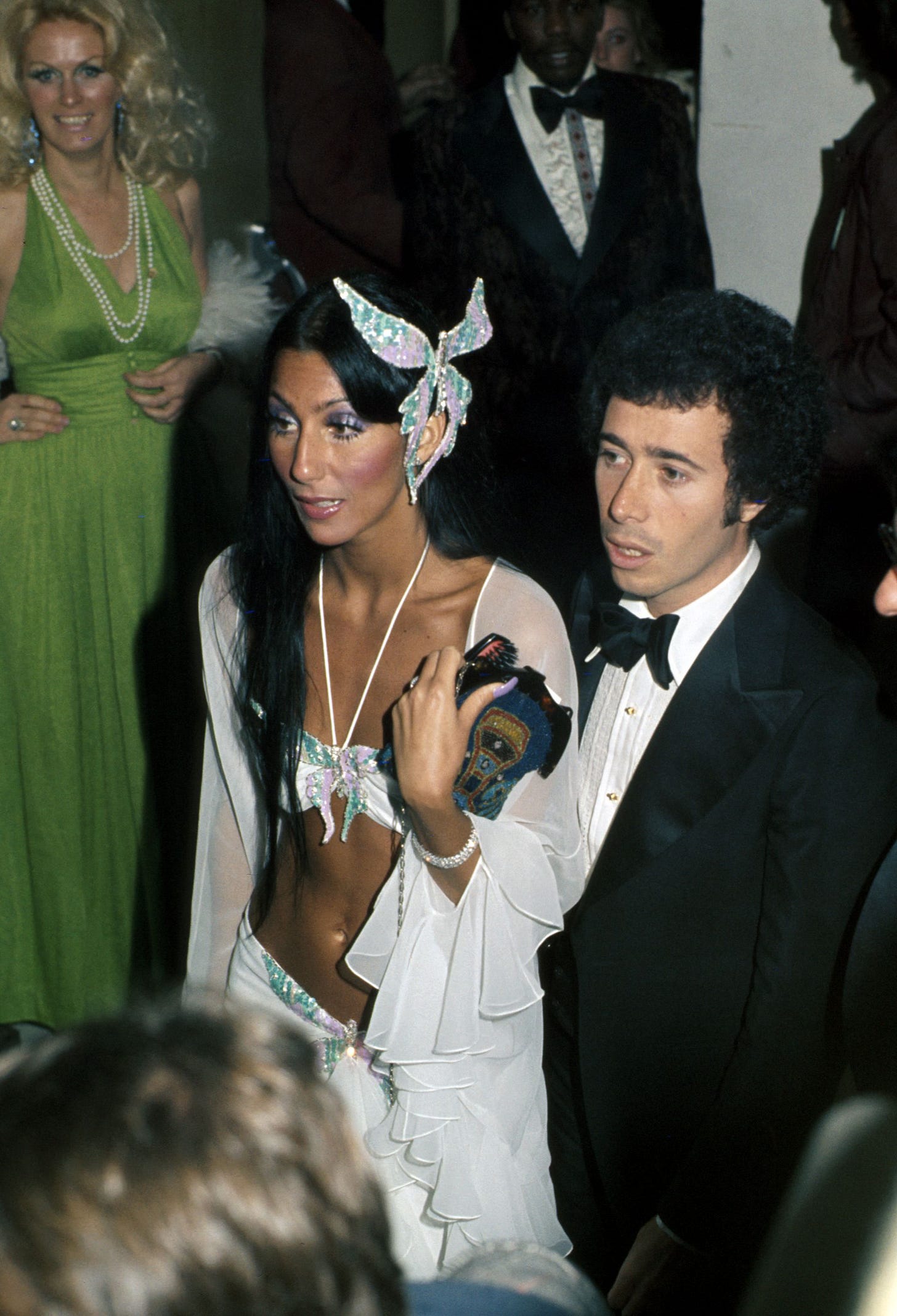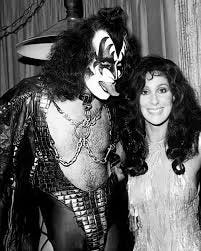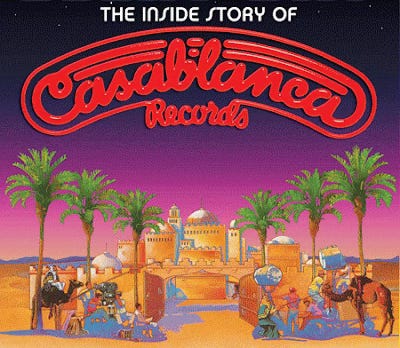💫 From Goddess to Disco Queen: How Cher Took Us Home
The Twelve Inch 186 : Take Me Home (Cher)
I remember it like it was yesterday. I was working at Warner Music Belgium when we were suddenly called into the meeting room, Warner International had just sent over the first footage of Cher’s new single, “The Music’s No Good Without You.” It was 2001, and we were still selling Believe in huge numbers. Everyone expected another big moment.
What we saw, though, wasn’t Cher in a dazzling outfit commanding the dancefloor. It was Cher sitting in a studio, quietly listening to her own song, drinking whiskey through…. a straw? 🫣. Talk about an anti-climax. The jokes started immediately. Why the straw? Too much Botox to open her mouth properly?
We were sure the single would be a hit (wrong). We were sure the album would be massive (wrong again). Still, we believed Cher was back, and this time, she’d stay on top.
And yet, that was hardly her first comeback. Cher is, in many ways, the comeback queen of the music business. Her career began in 1965 and, six decades later, she’s still here. That’s impressive by any measure. But the road wasn’t smooth. Every few years, a new label, a new sound, a new image. She reinvented herself so often that some dismissed her as a trend-chaser, a pretty face surfing whatever wave was popular.
But everyone who’s worked with Cher says the same thing: she knows exactly what she wants. Beneath the wigs and costumes is an artist with clear intent, one who always struggled to be taken seriously, especially as a rock artist. Her beauty and celebrity didn’t make that any easier. And in the ’70s and ’80s, when rock and disco were cast as opposites, embracing the dancefloor was almost a sin for any “serious” musician. Yet for Cher, disco wasn’t a gimmick, it was survival.
So what happens when one of pop’s most recognizable voices trades folk-rock roots and TV fame for glitter, spandex, and golden wings? In 1979, Cher did exactly that. “Take Me Home” became her ticket back into the spotlight, and the first step toward the reinventions that would keep her career alive for decades to come.
Was it her idea? Or a label-driven gamble? And why does “Take Me Home” still matter in the story of pop’s most enduring chameleon?
Let’s drop the needle on the moment Cher danced her way out of a career slump, with the help of a flamboyant record mogul, a clever producer, and a team who turned the Goddess of Pop into a creature of the disco night.
So grab your Viking helmet, and let’s dive in.
👋 Welcome, I’m Pe Dupre, thanks for stopping by.
This is The Twelve Inch, my newsletter about the history of dance music from 1975 to 1995, told one twelve-inch record at a time.
If this landed in your inbox because a friend forwarded it, I’d love for you to subscribe so you don’t miss the weekly episodes. Each one dives into a track, its story, and the culture around it.
And if you’re already enjoying the free posts, would you consider becoming a paid subscriber? Your support helps me keep researching, writing, and unearthing the stories behind the music.
🌟 Act I – The Goddess Loses Her Shine
By the late seventies, Cher was no longer “on top.” After her 1974 chart-topper “Dark Lady,” her musical momentum faded. She was still a familiar face on television, but her records just weren’t connecting anymore.
David Geffen, a good friend, helped her land a deal with Warner Records, where she tried to reinvent herself as a full-blown rock artist. But the audience didn’t bite. The singles went nowhere, the albums barely registered, and her personal life, a public divorce from Sonny Bono followed by a short, turbulent marriage to Gregg Allman, didn’t make things easier.
Meanwhile, the music world had moved on. Punk and disco were battling for the spotlight, and the singer-songwriter sound that had once carried her was disappearing from radio. For the first time in more than a decade, Cher found herself adrift.
But, as so often in her career, reinvention was just around the corner, this time wearing a Casablanca Records logo.
Ellen from Endwell recently published a great piece on Cher’s sixties era, a perfect companion to this week’s post.
💋 Act II – Enter Neil Bogart: The Master of Reinvention
Cher’s connection with Casablanca Records began at a party hosted by Joyce and Neil Bogart for California governor Jerry Brown, who was then preparing a bid for the 1980 presidential race. It was a political fundraiser, but it ended up changing Cher’s career.
At that party, she met Gene Simmons. The two became a couple, and Gene would be the one to persuade Casablanca to sign her. He knew Cher’s image, glamorous, rebellious, and already iconic, was perfect for disco’s theatrical excess.
According to several insiders, Bogart personally courted Cher. She was hesitant at first, disco wasn’t her natural playground, but Bogart’s confidence and proven success won her over. After all, this was the man who had taken a Munich club singer (Donna Summer) and turned her into an international superstar.
Bogart’s pitch? “You’ve conquered pop, TV, and movies. Now let’s conquer the clubs.”
That didn’t mean Cher had no say in what followed. When asked about her creative input, she explained:
The admiration was mutual. In his book And Party Every Day, Larry Harris recalls how Cher told him she “found Neil Bogart a great guy.” Why? Because he had agreed to a higher royalty than she had even asked for. 😁
Bogart, for his part, was clearly taken with her. He even bought Cher a brand-new Jeep for Christmas. When Donna Summer found out, all hell broke loose, and Bogart had to buy Donna an even fancier Jeep to keep the peace. 😱
🎛️ Act III – Bob Esty and Michele Aller: The Architects of “Take Me Home”
The first thing Neil Bogart did to reboot Cher’s career was pair her with producer Bob Esty. Cher would later recall:
Bob Esty, a classically trained arranger and one of the unsung heroes of the disco era, had already made his mark working with Paul Jabara (“Last Dance”) and was part of Casablanca’s close-knit creative circle of producers, musicians, and mixers who often collaborated across projects.
Interestingly, Esty wasn’t the original producer. At first, Ron Dante had been hired for the job. Esty later explained: “I took over the production of the ‘Take Me Home’ which was originally being produced by Ron Dante. It was a very typical Cher album of the time, but it didn’t fit into the Casablanca sound and profile. Neil wanted to bring her back as a Disco Clotheshorse.”
Together with his songwriting partner Michele Aller, Esty wrote “Take Me Home” specifically for Cher, a pulsing, sensual track that combined orchestral drama with a sleek, club-ready rhythm. Esty also produced the full album of the same name, recorded at Larrabee Sound Studios in Los Angeles.
The twelve-inch mix of “Take Me Home”, tailored for the dancefloor, extended that hypnotic invitation even further. Shimmering strings, muted guitars, and Cher’s cool, slightly detached vocal gave it an unmistakably European flavor, closer to Alec R. Costandinos or Cerrone than to the East Coast disco sound dominating American clubs.
It was, in short, a perfect match for Casablanca’s cosmopolitan, larger-than-life roster.
💃 Act IV – Selling Seduction: The Campaign and the Cover
Casablanca didn’t do subtle. The Take Me Home album cover, designed by Bob Mackie, was pure fantasy, carefully orchestrated. The concept came straight from Neil Bogart, and Mackie gleefully dialed up the mythological kitsch to eleven.
The photographs, shot by Barry Levine, glowed with a burst of green in the background that made the gold pop. Her outfit, inspired in part by Gene Simmons, was less costume than armor: Viking plates, capes of shining gold, and unapologetic glamour.
But it was 1979, and the backlash against disco was raging, angry white boys burning records in baseball stadiums. Yet there was Cher, perched on her golden cape, turned slightly toward the viewer with that devil-may-care stare, as if to say: “I’m going to outlast your hate and go on to play ‘Take Me Home.’”
Predictably, the cover caused a stir. Some critics dismissed it as tacky or exploitative; others hailed it as iconic. But it worked. In a world of mirror balls and roller skates, Cher looked like she had descended from Mount Olympus straight into Studio 54.
Bob Esty later reflected on the importance, and intention, behind the image:
Promotion, true to Casablanca form, was relentless. The label sent out custom twelve-inch singles to every major U.S. club, pushed radio remixes to dance stations, and even arranged for Cher to appear in full costume. DJs embraced it, the track became a club favorite, peaking at No. 2 on Billboard’s Disco Top 100.
When the single initially stalled at No. 30 on the Hot 100, Casablanca dispatched Cher on a promotional tour. She worked tirelessly, and the push paid off, Take Me Home climbed into the Top 10.
To celebrate, Neil Bogart reportedly set his promotion manager’s desk on fire, to prove how “hot” they were 🔥🔥🔥. But behind the scenes, things weren’t always so fiery. On one TV appearance, Bogart presented Cher with a gold disc for the album, even though sales hadn’t yet reached the threshold. The label had to scramble to ship thousands of extra copies to make the award true. 🫣
Another excellent piece on Cher by Brad Kyle :
🪩 Act V – The Afterglow (and Aftermath)
Encouraged by the success of Take Me Home, Cher wasted no time. By the end of 1979, she was back with Prisoner. The quick turnaround was pure Neil Bogart, a reflection of Casablanca’s signature “saturation marketing” strategy (as I explained in my Casablanca Records series). In an industry driven by momentum, the idea was simple: keep Cher visible, keep the clubs spinning, keep the story alive.
One of the singles of the follow-up album Prisoner
But disco’s glitter was beginning to fade. By late 1979, “Disco Sucks” had gone from slogan to industry reckoning. Ever pragmatic, Cher pivoted once again. Prisoner leaned more toward rock than disco, a subtle signal of where she was heading.
She made one more album for Casablanca, not under her own name but as the frontwoman of a short-lived band called Black Rose. The single “Never Should’ve Started”, written by David Paich, David Foster, and Valerie Carter, was produced by none other than James Newton Howard, who would later become one of Hollywood’s most respected film composers. In hindsight, that record served as a bridge to Cher’s later rock-heavy work in the eighties and nineties.
Unfortunately, timing worked against her. By the time Black Rose was released, Casablanca had been fully acquired by PolyGram, and Neil Bogart had exited. With him went the label’s trademark showmanship and relentless promotion. The album quietly disappeared, taking its momentum with it.
What followed was a carousel of reinventions and record deals, Columbia, Geffen, and eventually a return to Warner. Each phase marked another transformation: from rock singer to actress to the power-ballad icon of the late eighties and early nineties.
Then came another lull. The second half of the nineties mirrored the late seventies: no hits, no traction. Reprise Records, her then-label under the Warner umbrella, dropped her. But Cher wasn’t done. She slipped back in through the side door, signing with EastWest Records, one of Warner’s European imprints. 😂
That move set the stage for her biggest comeback yet: Believe (1998/1999). A record that didn’t just revive her career — it reinvented pop itself.
🚀 Act VI – Legacy and Connection
“Take Me Home” stands today as a fascinating turning point in Cher’s career, a bridge between the glitz and glitter of her seventies television fame and the stadium-sized pop of her next major comeback two decades later. It’s also a window into the final, extravagant phase of Casablanca Records, just before the label imploded under its own excess.
I recently published a full history of Casablanca Records in 5 parts :
In the immediate aftermath of disco’s fall from grace, Cher distanced herself from her Casablanca years, and especially from “Take Me Home.” She didn’t perform the song live for nearly twenty years, until the Believe era. From that point on, however, it became a regular feature of her tours. By the late nineties, disco was back in fashion, its influence heard across mainstream dance music, and Cher no longer felt the need to hide it.
The importance of her disco pivot and Casablanca period can’t be overstated. Before she signed with the label, Cher was yesterday’s news. Without that reinvention, it’s doubtful she’d have found the momentum to fuel her later comebacks. It’s ironic, then, that she spent much of the eighties and nineties trying to bury that chapter. But context matters: during those years, dance music in the U.S. had been forced underground by the “Disco Sucks” backlash and the cultural conservatism of the Reagan era. Cher, ever attuned to the market, knew exactly when to adapt. In the nineties, she didn’t need Take Me Home, she was being taken seriously again as a rock artist on Geffen.
So, was the disco pivot her idea or Casablanca’s? The answer is clear: it was Casablanca’s. Cher has admitted many times, in interviews and liner notes, that the label persuaded her to record disco, despite her initial hesitation. It’s often said that she found disco superficial or beneath her, but that seems oversimplified. Like Madonna later on, Cher had an uncanny sense of timing. When disco ruled the late seventies and everyone from movie stars to moguls was dancing at Studio 54, she joined in enthusiastically. She just never felt deeply connected to the genre, which made moving on from it all the easier.
The story of Take Me Home also reflects the tension artists faced after the disco backlash. For many established performers, those records became liabilities, especially in the U.S. market. Dance music was driven underground, and acknowledging one’s disco past was almost taboo. Cher’s later dismissive comments about that era make more sense seen through that lens.
Looking back today, though, Take Me Home stands as one of Casablanca’s finest releases. Bob Esty’s lush, orchestral production shines, sensual, cinematic, and perfectly balanced between pop and dance. Years later, David Morales’ remix beautifully highlighted the song’s enduring strength, stretching out the groove and magnifying its hypnotic break.
Take Me Home remains one of the true gems of late-seventies disco, a song that not only rescued a superstar’s career but also captured the shimmering, bittersweet twilight of the disco era itself. And fittingly, it got a second life when Sophie Ellis-Bextor revived it during the late-nineties disco revival, proof that, like Cher herself, great disco never really goes away.
💬 What About You?
Do you remember hearing Take Me Home when it first came out? Did you dance to it in a club, or discover it later through a reissue or remix? Did you like it? Did you stop at the record store to gaze at the cover?
Share your thoughts below, and if you’ve got a twelve-inch version spinning somewhere, turn it up and let the Goddess take you home.
Further reading (or should I say watching)
There are a number of interesting video’s/links :
So You Wanna Hear More ?
I thought you would !
It’s fun to write about music but let’s be honest. Music is made to listen to.
Every week, together with this newsletter, I release a 1 hour beatmix on Mixcloud and Soundcloud. I start with the discussed twelve inch and follow up with 10/15 songs from the same timeframe/genre. The ideal soundtrack for…. Well whatever you like to do when you listen to dance music.
Listen to the Soundtrack of this week’s post on MIXCLOUD
Or on Youtube :
So what’s in this week’s mix ?
Take Me Home takes us straight into the disco of 1979, a year that not only saw the start of the disco backlash, but also a shift toward a funkier sound driven by prominent bass guitar. Just listen to the second half with Paradise Express’s “Dance”, Bonnie Boyer, and Herbie Hancock’s “Tell Everybody” to hear what I mean.
We kick things off in a more traditional vein with Cher, Shalamar, and one of those forgotten gems, “Love It Up Tonight” by Peaches & Herb, before moving into deeper territory. Like the mix from two weeks ago, this week’s set is a true dive into the tracks that lit up the dancefloor. Some will be familiar, some forgotten, and others you might not have heard in years.
Enjoy! 🎶
Next week, we’ll dive into a song that oozes pure sex, and into the world of an icon who defined the art, fashion, and edge of the late seventies and eighties: Grace Jones.













I didn't know it at the time, but looking at it now, one can see the influence that Betty Davis' 'They Say I'm Different' must have had on Cher's costume. The '70s were all about raw sexuality, and Funk, Soul, and Disco capitalized on it (look no further than the Ohio Players album covers).
Fascinating deep dive into a legendary artist about whom, admittedly, I don't really know that much, or not enough, apart from the Believe era (right when I was a pre-teen) and some of her earlier work (her Heart of Stone album comes to mind). What a great opportunity to put that right! Thank you, Pe! I hope you have a fab weekend!